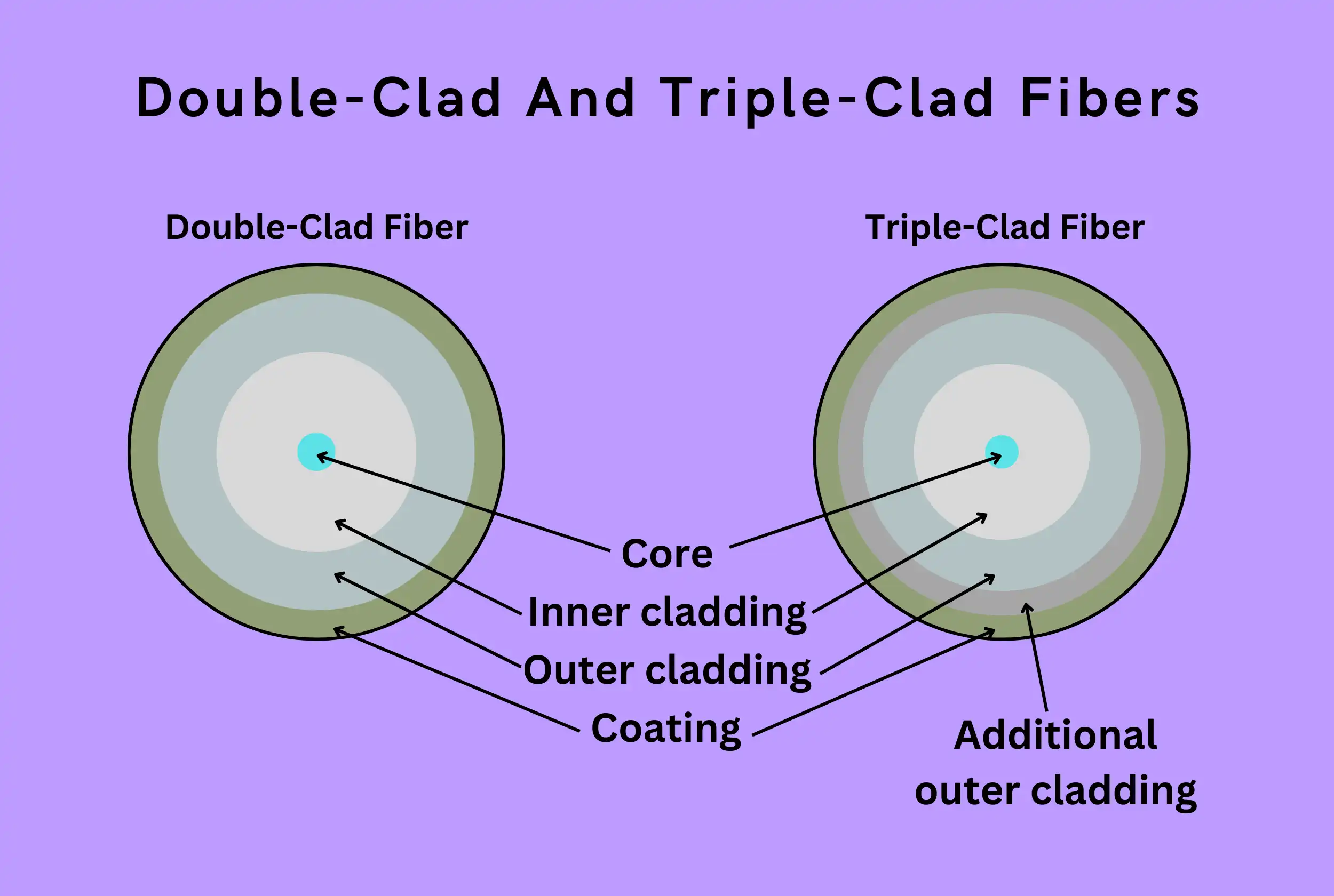Contents

Source: Fiberopticx
Understanding Triple-Clad Fibers in Photonics
In the realm of photonics, fiber amplifiers and lasers are integral components, with rare-earth-doped fibers being one of the simplest forms. However, advancements in fiber design have introduced more sophisticated structures, such as double-clad and triple-clad fibers, which have significantly enhanced the performance and capabilities of fiber optic devices.
Introduction to Fiber Structures
Rare-earth-doped fibers are a foundational technology in fiber optics, where the pump light is directly injected into the fiber core. These fibers are crucial for the amplification of light signals. However, to achieve higher output powers, the design of these fibers has evolved to include double-clad structures, and further advancements have led to the development of triple-clad fibers.
Double-Clad Fibers
Double-clad fibers incorporate an additional undoped cladding layer around the fiber core. This design allows for the injection of pump radiation into the cladding, which in turn enables higher power outputs. The cladding helps to guide the pump light more efficiently into the core, thus improving the overall performance of the fiber device.
Triple-Clad Fibers
Triple-clad fibers take the design a step further by adding yet another cladding layer. This additional layer offers more flexibility in fiber design and can lead to improved performance under certain conditions. The basic operational principles remain similar to those of double-clad fibers, but the added cladding provides additional advantages.
Advantages of Triple-Clad Fibers
- Enhanced Pump Light Coupling: The additional cladding allows for a smaller pump cladding diameter, leading to a larger core/cladding area ratio. This results in better coupling of pump light to the fiber core, increasing pump absorption efficiency.
- Geometric Flexibility: The design allows for modifications in the geometric shape of the pump cladding, such as elliptical or rectangular shapes, without altering the overall circular cross-section of the fiber. This is beneficial for minimizing insertion losses during splicing.
- Improved Beam Quality: The reduced numerical aperture (NA) of the pump cladding requires better beam quality of the pump radiation, which can lead to more efficient fiber performance.
Challenges in Triple-Clad Fiber Design
Despite their advantages, triple-clad fibers also present certain challenges. The refractive index contrast between the inner and outer cladding is limited when both are made of glass, resulting in a smaller numerical aperture. This necessitates higher beam quality from the pump source to ensure efficient operation.
Applications and Optimization
Triple-clad fibers are used in various applications, including Raman lasers, where high pump intensities are crucial. Optimizing the mode structure by manipulating the diameter and refractive index of the claddings can also help minimize bend losses and enhance mode suppression.
Conclusion
Triple-clad fibers represent a significant advancement in fiber optic technology, offering enhanced performance capabilities for high-power applications. While they pose certain design challenges, the benefits they provide in terms of efficiency and flexibility make them a valuable asset in the field of photonics.

Source: heracle GmbH
Feel free to comment your thoughts.



